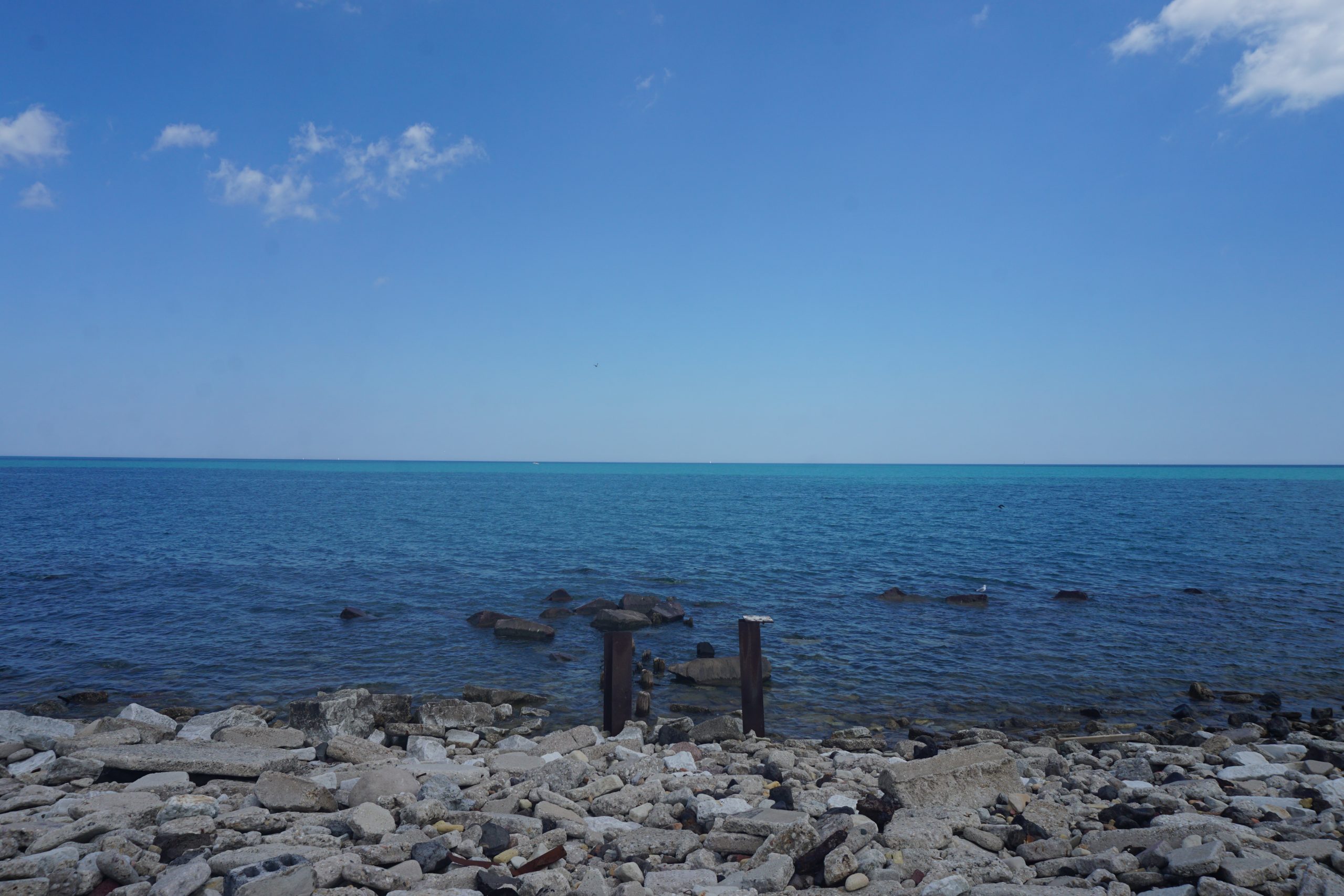Lake Michigan’s winter landscape is a breathtaking sight, with the formation of frozen ice shards along its shoreline. These unique ice formations are a result of the melting and refreezing process that occurs during the colder months, creating a mesmerizing display of nature’s power.
Formation of Lake Michigan Frozen Ice Shards

The formation of ice shards on Lake Michigan begins when the ice on the lake starts to melt. Wind and wave action push the melting ice toward one side of the lake, causing it to break into sharp pieces that pile up along the shore. This process typically occurs toward the end of winter when the ice begins to thaw.
Timelapse Video of Ice Shard Formation

A timelapse video captured at Grand Haven State Park showcases the formation of ice shards along the shoreline. The video highlights the noise of the ice cracking and piling up over a period of 30 minutes. The ice sheets were approximately a quarter-inch thick and ranged in size from a few inches to over two feet long.
Typical Ice Coverage on Lake Michigan
By the end of January, Lake Michigan typically has significant ice coverage. In some years, up to 56% of the lake can be frozen, especially during extremely cold temperatures like those experienced during the polar vortex.
Impact on the Fishing Industry
The lack of ice on Lake Michigan can affect the fishing industry in several ways. Warmer winters can lead to changes in fish populations and habitats, potentially impacting fishing yields. Additionally, the absence of ice can alter the distribution and behavior of fish, making them more difficult to catch.
Dangers of Shelf Ice on Lake Michigan
Shelf ice on Lake Michigan poses several dangers. The ice can be thin and prone to breaking, making it hazardous for people to walk on. Furthermore, the formation of ice shoves or ice heaves can cause massive piles of ice to accumulate on the shore, damaging everything in their path. It is essential to exercise extreme caution when approaching the ice shelves, as the thickness of the ice can change quickly over short distances.
Unique Ice Formations on Lake Michigan
Lake Michigan’s winter landscape features various unique formations, including pancake ice, ice balls, and ice volcanoes. Pancake ice forms when winds break up ice sheets into circular pieces, while ice balls are created when chunks of ice are smoothed into spheres by wave action. Ice volcanoes occur when water is pushed under the ice sheet, building pressure and causing water to shoot out through holes in the ice, forming cones.
Safety Precautions for Viewing Lake Michigan Frozen Ice Shards
It is crucial to remember that no ice is safe ice, and walking on ice sheets should be avoided. The Coast Guard has warned locals not to attempt to walk out on the ice as it is thin and prone to breaking apart. Viewing the ice shards from a safe distance is the best way to enjoy this natural wonder.
References
- https://www.youtube.com/watch?v=is8St2mth4Q
- https://abc7chicago.com/lake-michigan-frozen-ice-formations-great-lakes/10333805/
- https://www.forbes.com/sites/trevornace/2019/03/21/this-is-why-gorgeous-ice-shards-keep-piling-up-along-lake-michigan/
- https://www.reddit.com/r/NatureIsFuckingLit/comments/112aeju/lake_michigan_shattering_into_shards_of_ice/
- https://www.mlive.com/news/muskegon/2022/01/mesmerizing-timelapse-shows-ice-shards-forming-along-lake-michigan.html
